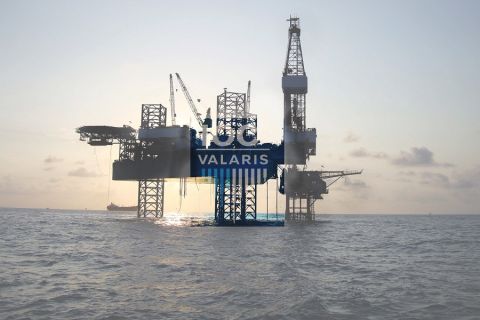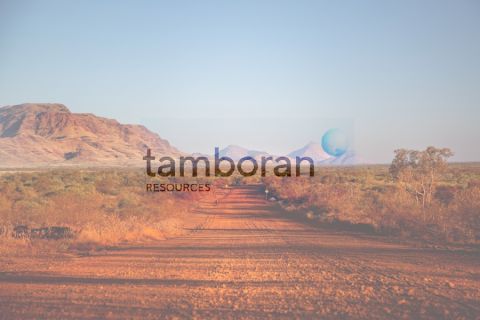The march of offshore production facilities into deeper and more hostile environments combined with increasing environmental awareness and regulation drove the quick adoption of hydrocyclones for water treatment on offshore platforms. The argument for hydrocyclones was compelling: Substitute pressure-driven centrifugal force for gravity to do the separation work.
The hydrocyclone promised superior water quality at a fraction of the real estate needed for its traditional onshore cousins, the skim tank and the float cell. Several hydrocyclones were installed in the North Sea. They worked well, so adoption of the technology moved rapidly to the Gulf of Mexico (GoM), answering the call for space and weight reduction on floating structures. Today every corner of the offshore world looks to hydrocyclones as the primary method for produced water treatment.
Lessons on hydrocyclones
While hydrocyclones became a go-to solution everywhere, the engineers designing and operating deepwater facilities in the GoM soon learned a lesson about turbulence, shear and oil-droplet size that would impact the hydrocyclone’s ability to make clean water. Engineers on the big floating facilities dealing with much smaller separation vessels had to pass water along with the oil through control valves with large pressure drops.
When produced water with oil passes through a control valve, severe turbulence chops and disperses oil drops into much smaller droplets in much the same way that the nozzle on a garden hose can atomize water into a mist. The same hydrocyclones installed in the GoM were not as effective as they had been in the North Sea.
Larger oil droplets will move quickly to a hydrocyclone’s core, where they can be separated. The tiny oil droplets formed by control valves move much more slowly so that some of them don’t reach the core and instead pass through with the water. Because of this, U.S. operators dealing with less efficient hydrocyclones adapted by adding water-treatment chemicals and more sophisticated equipment downstream, including vertical flotation cells, filters and oil-adsorbing media.
The second lesson on hydrocyclones is their poor response to changes in flow and pressure. A well-tuned hydrocyclone operating at steady conditions can produce very clean water with oil concentrations well below most discharge standards. Unfortunately, oil is produced in a complex network of wells, piping and separation vessels that stubbornly refuse to provide steady conditions for the water treatment system. The job of tuning the hydrocyclone is complex and usually involves breaking containment to change internal components. Since water flow rates can vary by the hour, the hydrocyclone is almost never tuned well enough to produce water quality that meets discharge standards.
Safe and sound, onshore and off
National Oilwell Varco has addressed the problems created by turbulence and changing water flow rates with the introduction of its WaterWolf, which combines hydrocyclone and progressing cavity pumps with a new process called dynamic oil recovery (DOR). The DOR process keeps the hydrocyclone properly tuned regardless of changes in flow and pressure from the separation system without using control valves that can shear oil droplets and make the water difficult to treat. The result is a water treatment system that produces water suitable for discharge without the use of chemicals or additional treatment steps.
While initially conceived as a solution for the offshore community, it is the onshore operating community that has first taken notice of the technology. Since integral progressing cavity pumps generate the pressure energy needed by the hydrocyclones in the DOR process, a WaterWolf skid can replace or operate side by side with traditional skim tanks and doesn’t need additional pressure from the main separator.
This means that hydrogen sulfide gas (H2S), which is highly soluble in water and is often collected, burned and released into the atmosphere as sulfur dioxide gas (SO2) after a skim tank cleaning, is no longer an immediate threat at a pad where the WaterWolf is operating.
Unlike skim tanks, removal of oil and solids occurs within a pressurized and fully contained system. That means an operator can eliminate the emission of hazardous pollutants and greenhouse gases from skim tanks and also can eliminate costly and hazardous tank cleanouts to remove accumulations of solids in the tank bottom if it is using a WaterWolf instead of or along with a skim tank.
Simple economics
A well-designed and -operated skim tank working in conjunction with a good chemical treatment program can still leave in excess of 100 ppm of oil in the produced water. This residual oil is lost once it goes down a saltwater disposal well. Many tanks will pass as much as 1,000 ppm to 2,000 ppm of oil. While this may not sound like a lot of oil, the lost volume can quickly add up.
One hundred ppm of residual oil equals 1 bbl of oil for every 10 Mbbl of water. And 1,000 ppm equals 10 bbl of oil for every 10 Mbbl of water. Approximately 60 MMbbl of water are produced from oil wells every day in just the U.S., which means the country may be throwing away 5 Mbbl to 50 Mbbl of oil per day with its wastewater.
The new system, which does its job without the need for water-treating chemicals, will recover 90% to 95% of the lost oil while removing solids that will otherwise plug disposal wells and drive up energy and maintenance costs. These results make the DOR process an economically attractive addition for operators of mature high water-cut fields and saltwater disposal facilities as well as for the offshore industry, where its hydrocyclone roots originated.
The new system can help provide a much cleaner and safer future for workers and for the neighbors who live and work around oil production facilities. By reducing the overall cost and environmental impact of handling higher water volumes, it can extend the life of mature wells so they can contribute to the economy for many more years to come.
Recommended Reading
Utility, Clean Energy Company Allete to Go Private in $6.2B Deal
2024-05-06 - The Minnesota-based utility said on May 6 it agreed to be acquired by a partnership led by Canada Pension Plan Investment Board and Global Infrastructure Partners.
Valaris’ 1Q Sets Positive Tone for Offshore
2024-05-06 - Coming out of first-quarter 2024, drilling contractor Valaris expects a sustained upcycle for the offshore drilling industry supported by demand growth, OPEC+ production cuts and supportive commodity prices.
U.S. Shale-catters to IPO Australian Shale Explorer on NYSE
2024-05-04 - Tamboran Resources Corp. is majority owned by Permian wildcatter Bryan Sheffield and chaired by Haynesville and Eagle Ford discovery co-leader Dick Stoneburner.
1Q24 Dividends Declared in the Week of April 29
2024-05-03 - With earnings season in full swing, upstream and midstream companies are declaring quarterly dividends. Here is a selection of dividends announced in the past week.
Analyst Questions Kimmeridge’s Character, Ben Dell Responds
2024-05-02 - The analyst said that “they don’t seem to be particularly good actors.” Ben Dell, Kimmeridge Energy Partners managing partner, told Hart Energy that “our reputation is unparalleled.”





